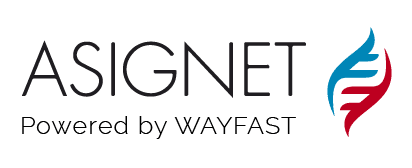Business operations have either been suspended or run on a limited capacity. Since the outbreak, demand for digital collaboration tools has escalated as organizations are deploying these tools so that employees can work remotely.
Many organizations have been disrupted, their employees stranded in various parts of the United States, and across the world with uncertain return dates. Of course, the impact of COVID-19 is not limited to USA organizations.
As the world is slowly recovering from the epidemic, with more businesses returning to operations, the virus is spreading to other countries with higher new reported cases than in China, where it all begins. Global organizations are facing the challenge of employee immobilization and supply chain disruption.
It’s not unknown that due to COVID-19 being a communicable disease, organizations have been deciding whether to cancel face-to-face meetings, conferences, and events.
While organizations may be in a crisis mode to cope with short-term impacts, there are long-term impacts of which they should be aware of.
In organizations where remote working capabilities have not yet been established, CIOs need to come up with interim solutions in the short term.
Organizations face challenges to the continuity of operations as employees are stranded in various locations with uncertain return dates. Every organization is experiencing dramatic changes in market demand which leads to a collective stress
As for now, organizations must find digital collaboration tools adequate to their needs with security controls and network support, and engage with their customers and partners through digital channels and maintain sales activities.
For later, they should be developing a workplace strategy and use technologies to automate tasks, and it is likely that you will need a combination of tools to cover all your use-case requirements.
Asignet’s solutions for organizations do have that feeling of relief for most of the companies out there
Along with RPA and Wayfast, the aPaaS platform, unified communications can be easily implemented in any small, mid-size or large organization by installing RPA software on the customer’s network and is tasked to execute automated and required transactions through workflows created in Wayfast.
This interacts autonomously with Skype and network infrastructure, Active Directory, HR systems, and O365 services to provision, operate, and control the users and usage of those services without human intervention.
This allows for increased productivity and costs savings when implementing and operating a next-generation communications platform.
Asignet’s Unified communication solution enables an average of 25% per user with respect to a UC solution of the competition, also achieving greater integration with the office automation tools.
Organizations must have Unified Communications to integrate services such as IP telephony, video conferencing, instant messaging, presence and directory sharing, screen sharing and voicemail, e-mail, SMS, and fax.
This provides a consistent user interface across multiple devices including PCs, Tablets, and Smartphones, which is the key to remote work nowadays.
The need for safe, reliable, and easy-to-use communications tools has given rise to a UC strategy that integrates multiple communications modalities inside single management and security bubble. The result is more effective communication, improved collaboration, and a boost to security and regulatory policies.
More than ever it is recommended that organizational IT departments begin exploring UC alternatives if they’ve not already begun or done so.
And this is extremely connected to Asignet’s mobility managed services (MMS) which includes technology that integrates needed IT process management with corporate resource data enabling enhanced support management of corporate individual-liable devices.
Effective MMS includes mobile device management, application management, security, enterprise application stores, and TEM as part of an enterprise mobility management suite.
These services are often tied together with a range of professional services, including; consulting, device integration support, testing, and deployment.
Mobile labor forces, operational corporate sites, and extended internal enterprise telecom management operations are no longer considered necessities for organizations. The largest enterprises and small businesses alike are empowering their expert workers with innovative technologies, increasing operational efficiencies, and the bottom-line.
Now that mobility is the primary networking vehicle for end-users, it’s time for IT departments to make mobile unified communications a priority.
The demand for unified communication has increased from startups operating in this sector to improve workforce collaboration and reduce costs.
The most important benefit of UC is the ability of organizations to finally leave behind the uncontrolled, untracked mish-mash of the consumer-centric, carrier, and third-party communications tools traditionally applied over the years.
Contact us if you want more information about our Solutions






